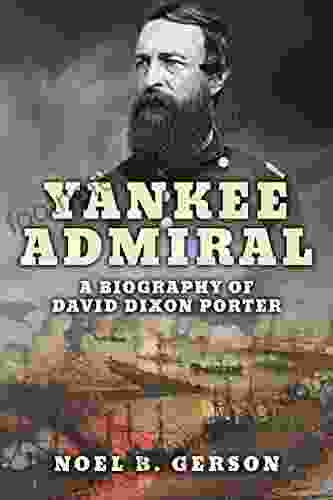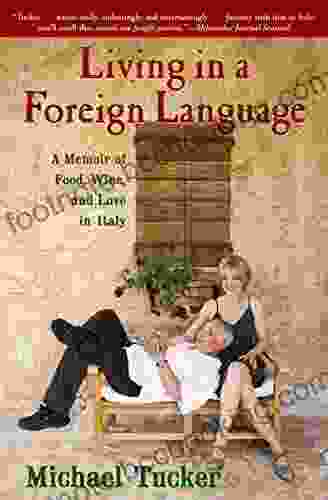Flexography: Principles and Practices

Unlock the Power of Versatile Printing

4.7 out of 5
| Language | : | English |
| File size | : | 15714 KB |
| Text-to-Speech | : | Enabled |
| Screen Reader | : | Supported |
| Enhanced typesetting | : | Enabled |
| Print length | : | 1213 pages |
| Lending | : | Enabled |
Flexography is a versatile and widely used printing technique that offers a cost-effective and high-quality solution for various applications. From packaging and labels to flexible packaging and corrugated board printing, flexography has become a preferred choice for industries seeking exceptional print results.
Understanding Flexography Principles
Flexography is a rotogravure printing process that utilizes flexible printing plates and a raised image area to transfer ink onto a substrate. The printing plates are typically made of photopolymer or rubber and are etched with the desired image. As the printing press rotates, the ink is transferred from the plates to a rubber roller, which then presses the ink onto the substrate.
One of the key advantages of flexography is its ability to print on a wide range of substrates, including paper, plastic, metal, and corrugated board. The flexibility of the printing plates and the controlled ink transfer process allow for precise and consistent printing results on various surfaces.
Essential Flexography Practices
Achieving exceptional flexography prints requires careful attention to various practices, including:
- Platemaking: Creating high-quality printing plates is crucial for accurate and detailed print results. The platemaking process involves designing the desired image, transferring it to the printing plate, and etching the plate to create the raised image areas.
- Ink Selection: The choice of ink plays a significant role in the final print quality and the durability of the printed materials. Flexography inks are available in various formulations to suit different substrates and applications, including water-based, solvent-based, and UV-curable inks.
- Press Setup and Operation: The proper setup and operation of the flexography press are essential for achieving consistent and high-quality prints. Factors such as impression pressure, ink flow, and web tension must be carefully controlled to ensure optimal printing results.
- Quality Control: Maintaining strict quality control measures is crucial in flexography printing to prevent defects and ensure the accuracy and consistency of printed materials. This involves regular inspection of printing plates, ink, and press performance, as well as monitoring the printed output for any deviations from the desired quality.
Applications of Flexography
Flexography is widely used in various industries and applications, including:
- Packaging: Flexography is the dominant printing technology for flexible packaging, such as food wrappers, pouches, and bags. It offers high-quality printing on various plastic and metallic substrates.
- Labels: Flexography is extensively used in the production of pressure-sensitive labels for various products, providing vibrant and durable printing on paper, film, and other label materials.
- Flexible Packaging: Flexography is ideal for printing on flexible substrates, such as films, foils, and laminates used in flexible packaging applications, enabling eye-catching and functional packaging designs.
- Corrugated Board Printing: Flexography is a cost-effective and high-volume printing solution for corrugated cardboard boxes and displays, providing sharp and durable prints on rough and absorbent surfaces.
Flexography is a versatile and highly effective printing technique that offers numerous advantages for various industries and applications. Its ability to print on a wide range of substrates, combined with its cost-effectiveness and high-quality output, makes flexography a preferred choice for creating stunning and durable printed materials. This comprehensive guide provides a thorough understanding of flexography principles and practices, enabling you to harness the power of this versatile printing technology.
Additional Resources
- Flexographic Technical Association
- Flexographic Printers Association
- Flexography Printing: A Comprehensive Overview
4.7 out of 5
| Language | : | English |
| File size | : | 15714 KB |
| Text-to-Speech | : | Enabled |
| Screen Reader | : | Supported |
| Enhanced typesetting | : | Enabled |
| Print length | : | 1213 pages |
| Lending | : | Enabled |
Do you want to contribute by writing guest posts on this blog?
Please contact us and send us a resume of previous articles that you have written.
 Book
Book Novel
Novel Page
Page Chapter
Chapter Text
Text Story
Story Genre
Genre Reader
Reader Library
Library Paperback
Paperback E-book
E-book Magazine
Magazine Newspaper
Newspaper Paragraph
Paragraph Sentence
Sentence Bookmark
Bookmark Shelf
Shelf Glossary
Glossary Bibliography
Bibliography Foreword
Foreword Preface
Preface Synopsis
Synopsis Annotation
Annotation Footnote
Footnote Manuscript
Manuscript Scroll
Scroll Codex
Codex Tome
Tome Bestseller
Bestseller Classics
Classics Library card
Library card Narrative
Narrative Biography
Biography Autobiography
Autobiography Memoir
Memoir Reference
Reference Encyclopedia
Encyclopedia Tamar Hermes
Tamar Hermes Jane Goodall
Jane Goodall Joel T Nigg
Joel T Nigg Thomas J Chermack
Thomas J Chermack Yuval Noah Harari
Yuval Noah Harari Frankie Bell
Frankie Bell Franz Metcalf
Franz Metcalf Lindsay M Chervinsky
Lindsay M Chervinsky Hawys Morgan
Hawys Morgan Sally Magnusson
Sally Magnusson Hal Brands
Hal Brands Stephanie Lewis
Stephanie Lewis Jude Allman
Jude Allman Kendyl Jameson
Kendyl Jameson Frank Gardner
Frank Gardner Flynn Berry
Flynn Berry Max Lucado
Max Lucado United States Government Us Marine Corps
United States Government Us Marine Corps Molly Kolpin
Molly Kolpin Gayl Jones
Gayl Jones
Light bulbAdvertise smarter! Our strategic ad space ensures maximum exposure. Reserve your spot today!

 Blake KennedyEscape into the Heart of New England: Explore the Allure of Maine, Vermont,...
Blake KennedyEscape into the Heart of New England: Explore the Allure of Maine, Vermont,...
 Lawrence BellEmbrace the Power of Irresistible To Women: A Literary Journey to Mastering...
Lawrence BellEmbrace the Power of Irresistible To Women: A Literary Journey to Mastering... Vladimir NabokovFollow ·7k
Vladimir NabokovFollow ·7k Grayson BellFollow ·2.4k
Grayson BellFollow ·2.4k Sean TurnerFollow ·14.5k
Sean TurnerFollow ·14.5k Alec HayesFollow ·15.2k
Alec HayesFollow ·15.2k Allen ParkerFollow ·3.3k
Allen ParkerFollow ·3.3k Brody PowellFollow ·4.5k
Brody PowellFollow ·4.5k Harvey BellFollow ·16.6k
Harvey BellFollow ·16.6k Jerome PowellFollow ·9.7k
Jerome PowellFollow ·9.7k

 Howard Blair
Howard BlairHeroes and Villains from American History: The Biography...
David Dixon...

 Felipe Blair
Felipe BlairAn Informal History of the 1920s: Uncovering the Roaring...
The 1920s, an era...

 Howard Blair
Howard BlairHow a Peculiar Victorian Zookeeper Waged a Lonely Crusade...
In the enigmatic world of Victorian...

 Harold Powell
Harold PowellMemoir of Food, Wine, and Love in Italy: A Culinary...
Prepare your senses...
4.7 out of 5
| Language | : | English |
| File size | : | 15714 KB |
| Text-to-Speech | : | Enabled |
| Screen Reader | : | Supported |
| Enhanced typesetting | : | Enabled |
| Print length | : | 1213 pages |
| Lending | : | Enabled |












